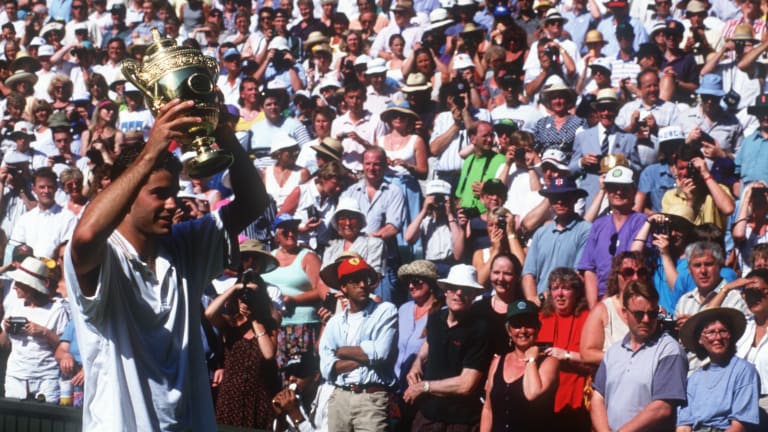Pete Sampras' No. 1 achievement wasn't his 14 Grand Slam titles
By Aug 12, 2020ATP Monte Carlo, Monaco
Richard Gasquet given Monte Carlo wild card 20 years after breakthrough win over Roger Federer
By Apr 03, 2025Second Serve
Wolfgang Puck: The biggest tennis fan in the kitchen?
By Mar 12, 2025Pop Culture
Serena Williams, Roger Federer, Aryna Sabalenka and pickleball all featured during Super Bowl LIX
By Feb 13, 2025Lifestyle
Roger Federer’s Wimbledon-winning racquet sells for more than $100,000 in tennis auction
By Feb 10, 2025Pop Culture
Roger Federer explains tennis scoring, On logo to Elmo in Super Bowl ad
By Feb 10, 2025Lifestyle
Roger Federer’s Wimbledon winning racquet currently up for auction
By Jan 28, 2025Australian Open
Henry Bernet, Australian Open junior champion, takes inspiration from fellow countrymen Roger Federer and Stan Wawrinka
By Jan 25, 2025Style Points
The best tennis fashion moments of 2024: Federer & Nadal for Louis Vuitton, Kostyuk's viral Wimbledon dress and more
By Dec 14, 2024Style Points
The year of Tenniscore: How the 'Challengers' effect transformed tennis fashion in 2024
By Dec 09, 2024Pete Sampras' No. 1 achievement wasn't his 14 Grand Slam titles
The American's six consecutive year-end No. 1 finishes is a record that still stands today, and may never be broken.
Published Aug 12, 2020
Advertising

Pete Sampras' No. 1 achievement wasn't his 14 Grand Slam titles
© Getty Images
Advertising

Pete Sampras' No. 1 achievement wasn't his 14 Grand Slam titles
© Getty Images
Advertising

Pete Sampras' No. 1 achievement wasn't his 14 Grand Slam titles